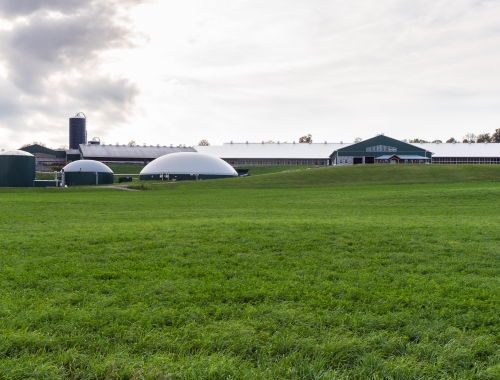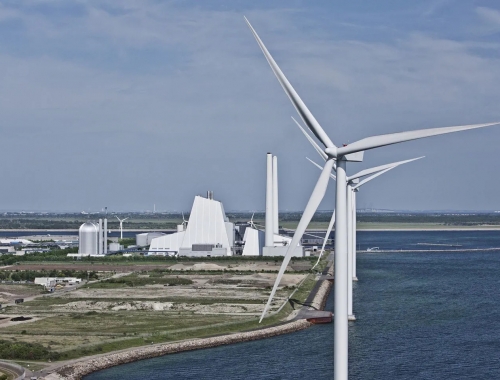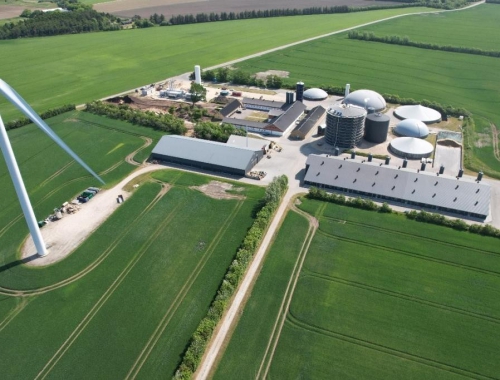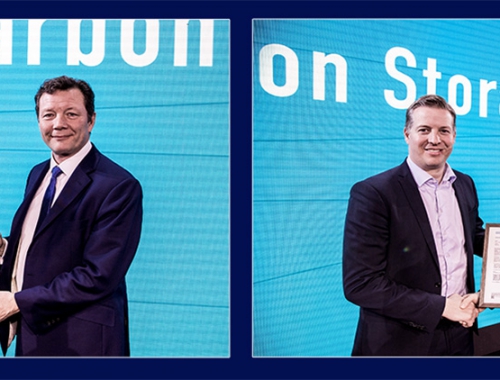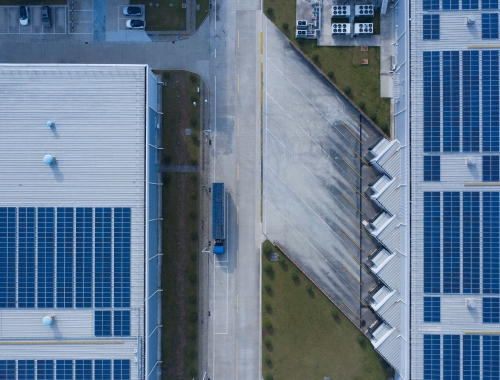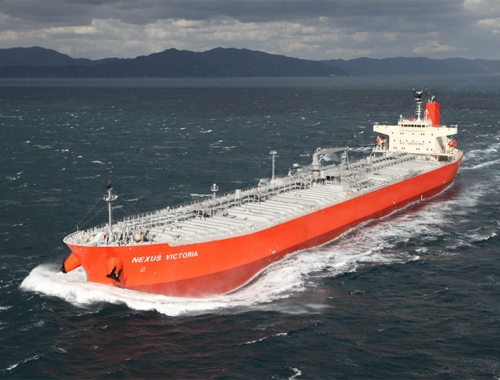Denmark gears up ambition on CO2 storage both offshore and onshore
SUMMARY
With oil and gas output in gradual decline, Denmark is planning to give depleted fields a second life as CO2 storage deposits. However, CO2 storage is also possible onshore owing to Denmark's favourable subsoil geology.
By Andreas WalstadPOSTED IN:
Denmark has set ambitious mid- and long-term targets for emissions reductions. This includes a legally binding target of reducing GHG emissions by 70% relative to 1990 levels by 2030. The country has also committed to reaching net zero emissions by 2050 at the latest, aiming to get there by 2045.
It is questionable if the country can reach these targets without large scale deployments of carbon capture and storage (CCS). Although ambitions for offshore wind and green hydrogen are significant – Denmark targets 37 GW of offshore wind capacity by 2050, up from 2.3 GW now - and 26 GW power-to-X capacity by the same year. But tackling emissions from heavy industry seems to hinge on CCS development.
At least this seems to be what the Danish coalition government – led by Mette Fredriksen of the Social Democrats – is thinking. To this end, Denmark recently launched a €1.1bn ($1.2bn) subsidy scheme to support CCS projects. In the words of the European Commission (EC), which approved the scheme under EU state aid rules in January this year, the support scheme “is expected to increase investor confidence in the CCS-technology, reduce costs for future application of CCS technologies and thereby facilitate the development of a commercial CCS market in Denmark.”
The subsidies will be awarded through a tendering process that will be concluded later this year. Any company across any industrial sector, including the energy sector, can bid for support. Under a 20-year contract, the beneficiary will capture and store a minimum of 0.4mn metric tons of CO2 annually from 2026. The money will cover the difference between the estimated total costs of capturing and storing one metric ton of CO2 over the lifetime of the contract and the return expected by the beneficiary. The maximum amount of support is just under €55mn/year.
“This €1.1bn scheme will enable Denmark to capture and store a significant amount of CO2, preventing its release into the atmosphere,” said Margrethe Vestager, the EC's executive vice president in charge of competition policy in a statement. “It will help Denmark achieve its ambitious target of climate neutrality by 2050 at the latest, in line with the European Green Deal objectives, while ensuring that competition distortions are kept to the minimum.”
Declining oil and gas output
Denmark’s growing interest in CCS coincides with falling oil and gas production in the country’s North Sea areas. The heyday of its offshore industry has long gone and several fields are nearing depletion or have been depleted already. Denmark’s gas production has fallen from around 7bn m3/yr in 2011 to just 1.3bn m3 in 2021, according to BP statistics. Gas production is expected to increase again – by around 2.8bn m3/yr – when the TotalEnergies-operated Tura II field commences production, which is expected in 2023/24. However, this may be the last large oil and gas development in the Danish North Sea. The Danish state announced in 2020 that it will no longer organise licensing rounds and drilling and exploration is now mostly limited to existing licenses albeit with some exceptions.
With oil and gas production shrinking there should be plenty of opportunities to store CO2. In December last year, the Danish Energy Agency granted authority for the pilot phase of the Greensand CCS project – promoted by INEOS and Wintershall – to inject 15,000 mt of CO2 in the depleted Nini West oilfield over a four month period.
This is the first time developers have received permission to store CO2 in Denmark, according to the agency. In the pilot phase, the CO2 will be injected into a sandstone reservoir 1,800 m below the sea surface. The developers target commercial operations from 2025, with the potential to store 0.5-1.5mn mt of CO2/yr in the first phase and 4-8mn mt of CO2/yr from 2030.
“Our focus is completing the pilot successfully and project Greensand is progressing as planned. After the evaluation of the pilot project decisions will be made on how to proceed,” a spokesman for the Greensand project tells Gas Pathways.
He said the offshore-rig Noble Resolve is in place at the Nini West field and currently undergoing commissioning to facilitate CO2 storage. Moreover, Blue Water Shipping and Semco Maritime are upgrading the transport ship so that the ship can safely transport containers with liquid CO2 from Antwerp, Belgium to the North Sea.
“When this is done the Project Greensand can begin commissioning tests leading up to the first ever storage of CO2 in Denmark,” the spokesman says.
Although the size and complexity of the operation should not be underestimated, the spokesman says Greensand is progressing as planned and expects to inject the first CO2 into the Danish subsoil in the first quarter of this year.
Additional onshore potential
Yet depleted offshore fields is not the only solution for CO2 storage in Denmark.
"To give oil and gas platforms in the North Sea a second life is a good idea. But that is only half of the story. Denmark is extremely well suited for underground storage of CO2, both onshore and offshore, due to the formation of sandstone layers. The potential for underground CO2 storage is vast," Adam Elbæk, CEO of Gas Storage Denmark tells Gas Pathways.
"We have the potential to store much more CO2 than we emit ourselves. We can offer other countries storage opportunities, including Germany, Poland and Finland."
Gas Storage Denmark owns and operates two gas storage facilities in Denmark and is pressing ahead with the development of an onshore CO2 storage facility.
"We are close to taking a FID on an onshore underground CO2 storage project in Stenlille on the island of Zealand, close to our existing gas storage facility there,” says Elbæk. “The project could be up and running by 2025 and store 500,000 mt of CO2 per year. We have been operating the nearby gas storage facility for 30 years so we know the geology extremely well. It is a very attractive place for CO2 storage."
CAPEX for the project is expected to be around 500-600mn Danish kroner ($73.2-87.9mn). The CO2 will be captured at industrial clusters before transported to the underground storage facility, according to plans.
"We expect that onshore CO2 storage will be cheaper to develop and also potentially closer to the customers compared with offshore. Offshore solutions, on the other hand, will not have the same considerations with regard to neighbours living next to the operations, and the geographical reach could be larger," the CEO says.
He confirms that there is now adequate political support for CCS in Denmark to complement the expansion of wind, hydrogen and other green fuels.
"The relevant political parties in Denmark are backing CCS. They have realised this is the missing piece to deliver the climate goals for 2030 and beyond. Without CCS, we will not reach these targets."
CCS in the power sector
In addition to heavy industry, CCS also has the potential to tackle emissions in the power industry. To this end, Ørsted is planning to develop carbon capture at its wood chip-fired Asnæs power station in Kalundborg on western Zealand and at the Avedøre power station’s straw-fired boiler in the Greater Copenhagen area. The projects hinge on financial support but, if developed, they can capture and store 400,000 mt of CO2 from the two CHP plants annually by 2025.
The CO2 would be stored in the North Sea although Ørsted has yet to announce exactly where.
“We are still examining the possibilities of CCS linked to our CHP plants and we have applied for funding under the [Danish €1.1bn] scheme. It has still not been decided where in the North Sea we will be storing the captured carbon in case we take FID,” a company spokesman tells Gas Pathways.

